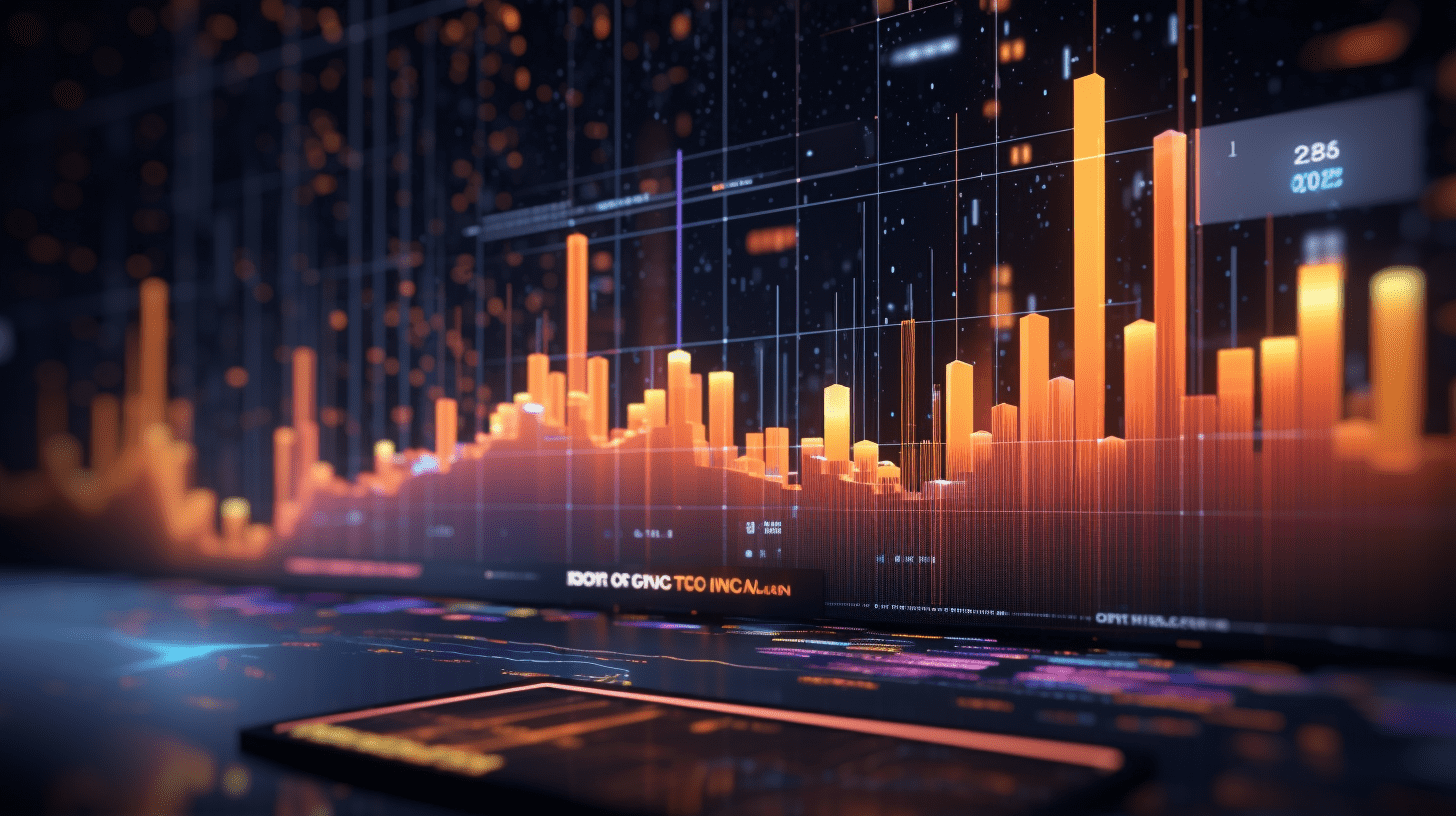The Federal Reserve favors inflation indicators remaining stable, "blonde girl" narrative begins to dominate the market.
In August, personal spending in the United States increased steadily for the third consecutive month, indicating that despite rising inflation, consumers continue to drive economic expansion, and expectations of a "soft landing" are significantly increasing.
The latest US economic data released on Friday has led to the optimism of a "Goldilocks-style soft landing of the US economy" beginning to dominate the trading logic of global financial markets. The latest data shows that in August, "US personal spending," which accounts for a crucial position in the US GDP calculation and represents nearly 70% of the overall GDP, has been steadily expanding for three consecutive months at a solid pace, indicating that despite stubborn inflation, American consumers are still driving the economy.
According to data released by the US Bureau of Economic Analysis (BEA) on Friday, adjusted for inflation, consumer spending in the previous month increased by 0.4%, better than the economists' general expectation of a 0.2% increase, and consistent with the revised previous value. The Federal Reserve's preferred inflation indicator - the core personal consumption expenditure (PCE) price index (which excludes food and energy and is the Fed's preferred inflation indicator) - rose by 0.2% in August compared to July, in line with economists' expectations and the revised previous value. Compared to the same period last year, this core inflation indicator stubbornly remained at 2.9%, also consistent with expectations and previous values.
In terms of overall PCE inflation, overall PCE increased by 0.3% month-on-month in August, consistent with economists' general expectations, slightly higher than the previous month's 0.2% increase; in August, overall PCE increased by 2.7% year-on-year, consistent with economists' general expectations and slightly warmer than the previous 2.6% value. This combination of consumer spending up + expected PCE curve + GDP upward revision does raise the subjective probability of the "Goldilocks" macroeconomic scenario: that is, growth is not weak, inflation is not too high, and market expectations are more inclined to a low-interest rate trajectory inclined towards interest rate cuts.
After the perfect PCE inflation data, along with the unexpected upward revision of US Q2 GDP data, and recent initial jobless claims data indicating that the labor market has not deteriorated further, the market suddenly became very optimistic about the prospects for US economic growth, especially the expectation of a "Goldilocks-style soft landing" of the US economy, which has increased significantly. At the same time, the market's expectation of a Fed rate cut has not significantly cooled down, as it still predicts that the Fed will continue to cut interest rates by 25 basis points in October and December.
It is worth noting that although the core PCE has met expectations for several months in a row and has not shown an upward trajectory, Americans are still dealing with long-term stubborn inflation. As the tariff measures led by US President Donald Trump gradually transmit through the US economy, there is a risk of maintaining relatively high inflation in the long term.
Although many US retail companies initially chose not to raise prices as they digested accumulated inventories before the tariffs, and they feared that upward prices would threaten the demand for healthy consumer growth, unless companies pass some of the higher costs, their profit margins will be at risk.
As inflation continues to remain above the Fed's 2% target, some FOMC policymakers remain cautious about further rate cuts. The September non-farm payrolls report will be an important data point for the Fed's next monetary policy meeting, but with the looming threat of a federal government shutdown, it is not clear whether Fed policymakers will be able to timely obtain this data.
After the release of the PCE inflation data report, the three major stock index futures in the US stock market changed course to climb, while US short-term Treasury yields remained at low levels.
US consumer spending unexpectedly rose by 0.7% month-on-month in August, reflecting an increase in purchases of discretionary goods such as furniture, clothing, and leisure goods. Service spending increased at a more moderate pace.
Although there is evidence of higher prices due to tariffs and a cooling labor market, consumers - especially high-income groups - continue to spend, and many professionals, including Fed officials, increasingly believe that the inflation brought about by Trump's tariffs will be "temporary." The recently released August retail sales report showed continuous growth for the third consecutive month, partly boosted by back-to-school shopping.
Given the signs of a slowing job market, it is unclear how long US consumers can continue to spend with such vigor. Real disposable income has hardly increased, and wages and salaries not adjusted for inflation have slowed compared to the previous month. Meanwhile, the savings rate fell to 4.6%, the lowest since the beginning of the year.
The service sector is the driver of high PCE inflation, while goods prices have remained relatively moderate. Prices of entertainment goods, automobiles, major appliances, and household items have all declined, indicating that recent discounts have helped stimulate spending in these categories. The core service sector inflation index (excluding energy and housing) continued to rise by 0.3% for two consecutive months.
With GDP exceeding expectations, and the labor market not deteriorating further, the outlook for the US economy has suddenly become more optimistic.
The continued strong growth in US consumer spending adds evidence to the sustained and stronger-than-expected expansion of the economy in this quarter, building on the higher-than-previously-estimated economic growth in the previous quarter. However, maintaining this growth momentum largely depends on the labor market, which has shown signs of relative weakness, including slower hiring and more moderate wage increases. Nonetheless, the latest initial jobless claims report shows that the labor market has not deteriorated further, and there are signs that while US non-farm labor market growth has slowed significantly, it remains inclined towards upward expansion.
According to data released on Thursday, benefiting from stronger US consumer spending data, the US economy achieved its fastest growth in nearly two years in the second quarter, with adjusted for inflation, the US GDP in the second quarter increased by 3.8% year-on-year, higher than the previous preliminary estimate of 3.3%. Economic indicators released simultaneously on Thursday showed strong growth in business equipment orders, a narrower-than-expected trade deficit, and initial unemployment claims falling to the lowest level since mid-July.
Tony Pasquariello, partner at Goldman Sachs Global Markets Division and head of hedge fund activities, mentioned in an internal memo to clients that while the growth of the US labor market has sharply slowed at times and occasionally turned negative, this is by no means a signal that the US labor market is in a sustained slump.
"Looking at the employment data, its hard not to worry about some trends, especially with the increasing development of artificial intelligence. Although I do not dismiss these concerns, a review of history will reveal an interesting story: in the mid to late 1990s, the US experienced negative employment reports several times - in 1995, 1996, 1998, and 1999 - and that was definitely not the time to be bearish on the stock market." Tony Pasquariello, head of hedge fund activities at Goldman Sachs, added.
Overall, the specific extent to which US companies will raise prices remains uncertain, with some economists suggesting that businesses may raise prices slightly, as excessive concern about price increases leading to a significant reduction in demand. If price increases only lead to moderate and temporary inflation in the second half of the year, while consumer spending remains strong and the labor market demonstrates resilience, it means that the US economy is closer to the "Goldilocks" macroeconomic environment, which is why the strong US GDP data, retail sales data, and the unexpected consumer spending report have led to increased expectations for the US economy to return to a "Goldilocks" macroeconomic environment.
The so-called "Goldilocks" US macroeconomic environment, which refers to an economy that is neither too hot nor too cold, maintains moderate growth in GDP and consumer spending with gentle inflation trends, while benchmark interest rates are on a downward trajectory.
Under the combination of "Goldilocks" and expectations of rate cuts, the "bull market narrative" of the US stock market and even global stock markets remains strong.
Following the release of the latest consumer spending and PCE inflation data, Wall Street analysts have begun to interpret this data as leaning towards a "Goldilocks-style soft landing," where resilience in growth is increasing, inflation is not worsening, monthly changes are moderate, and the Fed's interest rate expectations have shifted towards a marginal downward trend. As a result, market sentiment towards the US stock market has turned optimistic.
Tony Pasquariello, head of hedge fund activities at Goldman Sachs, recently published a research report stating that as the S&P 500 index, a benchmark index of the US stock market, and the MSCI Global Index, a benchmark index of global stocks, have repeatedly reached historical highs driven by large tech giants and leaders in AI that hold high weights, investors should not resist the hot global bull market dominated by the unprecedented AI investment boom. The market exists with a stronger bullish momentum, and a "responsible and steady long strategy" should be adopted.
Goldman Sachs, known as the "bellwether of the stock market bull market," has the same investment attitude towards the US stock market and global stock markets as its Wall Street counterparts, who have recently turned to a "bullish and optimistic stance." With the unexpectedly strong consumer spending, corporate earnings growth data, and the rekindled enthusiasm for artificial intelligence driving US stocks to surge since April and reach record highs recently, top analysts from Wall Street are rushing to revise the year-end and next year outlook for the S&P 500 index.
Analysts, especially those who have been bearish on the US stock market for a long time this year, are constantly "tearing research reports" by updating their target points for the S&P 500 index many times this year, in order to keep up with their peers' bullish expectations and the epic bull market pace of the US stock market.
Overall, these top Wall Street analysts generally expect the overall earnings of the S&P 500 index components and the investment return rate of this benchmark index to expand in 2025 and 2026, 7000 points have even become the "new anchor" of the S&P 500 index - most analysts predict that this index may soar substantially towards 7000 points by the end of this year or the beginning of next year.
Related Articles

U.S. consumer confidence index in September drops to lowest since May, long-term inflation expectations rise for second consecutive month.

Traders expect OPEC+ to continue increasing production in November in order to regain global market share.

The Shanghai Stock Exchange holds a meeting for equity investment institutions in 2025, focusing on implementing the "1+6" policy measures of the Sci-Tech Innovation Board reform.
U.S. consumer confidence index in September drops to lowest since May, long-term inflation expectations rise for second consecutive month.

Traders expect OPEC+ to continue increasing production in November in order to regain global market share.

The Shanghai Stock Exchange holds a meeting for equity investment institutions in 2025, focusing on implementing the "1+6" policy measures of the Sci-Tech Innovation Board reform.






